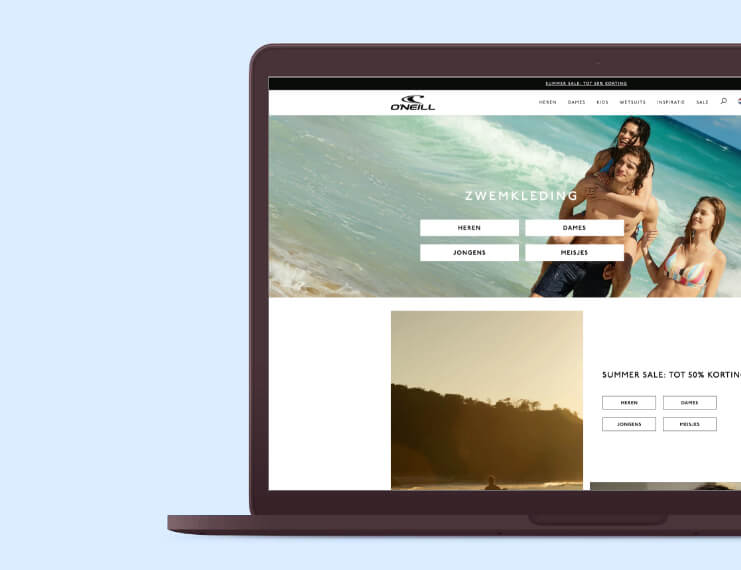Step 1: translate your Shopify theme
Shopify is an English-language application. But of course you want to launch your Dutch webshop in Dutch. This is not just a matter of entering your texts and product descriptions in Dutch. Next to that, you will have to translate all the microcopy (short little sentences like "Click here to order", or "we have received your order"). You can do this by translating your Shopify theme: how this is done is explained in this video-tutorial.
Step 2: make your site multilingual
In Belgium, support for a multilingual site is a must. And many Dutch webshops also want an English version of their site. How do you enable this in Shopify?
It depends on what you have in mind exactly. If your webshop operates in a single country, a translation plugin comes in handy. But if you plan to compete on both the Dutch and the German market, for instance, we would advise you to use two separate Shopify accounts, one for each language. Why? Because the language is not the only difference. German regulations and customs are also quite different from what we're used to in the Netherlands, and it looks much more professional to tailor your German webshop to the particularities of its German audience. This is not possible when your German webshop is in the same Shopify account as your Dutch webshop: it will be little more than a Dutch webshop in German.
For webshops that focus on a single country, the Langify app is a useful solution. This plugin enables you to make different versions in different languages for every text in your shop. You simply manage the different languages from one and the same Shopify account. Langify has a good reputation, but is rather costly: $ 17.50 a month. Would you like something a bit cheaper? Have a look around these alternatives. To prevent confusion: Langify does NOT offer readymade translations! You will still have to provide translations yourself. There are plugins for that as well.

Step 3: offer the right payment methods
Every self-respecting Dutch webshop supports iDeal, and every Belgian webshop BanContact, KBC and Belfius. This is a given you cannot ignore if you want to be successful on the Dutch or Belgian web. Until a few years ago Shopify could not ensure this, but now there is Mollie. This company has developed an API (Application Program Interface: a piece of code that specifies how different software components are to work together) that allows you to integrate various national and international payment methods into your website in one go. With a Mollie account you get access to an API key, which you can easily add to Shopify. Here they show you step by step how to do this.
Mollie is not free: they charge a small fee for every successful transaction. For iDeal it is € 0,29, for BanContact € 0,25 plus 1,5% of the total amount. Check out the full overview of prices here.
Step 4: connect your webshop to local carriers
Another must: integration with Dutch and Belgian carriers such as PostNL and bpost. Sendcloud has built a free Shopify plugin that deals with this for you. Just like Mollie, Sendcloud offers a total package: next to PostNL and bpost you can also choose international carriers such as UPS and DHL. The plugin comes with some lovely extras, among them a plug&print module for shipping labels and the option to add your own branding to track&trace messages and return confirmations. Here is a list of all the features.
The Sendcloud plugin is free, but of course you do pay for the delivery of your packages. The price per package drops the more you send of them: click here for the rates per carrier service.
Step 5: connect your webshop to local fulfilment parties
To round off, for larger webshops it is really helpful to integrate Shopify with their Dutch or Belgian fulfilment partner. Active Ants for instance, or Promese. There is currently no plugin or API available which, along the lines of Sendcloud or Mollie, allows you to connect your webshop to a number of Dutch and Belgian fulfilment companies. We don't expect such an app any time soon, since no two fulfilment parties are alike. CODE knows from experience that they all use different software, which means integration with Shopify has to be tailored to individual cases.
In case you're interested in this type of custom-built solution, be sure to contact us! CODE has considerable experience integrating webshops with fulfilment parties, and we can assure you this will take a lot of work off your hands. Call, email, or visit us in Delft, and we'll give you more information and an estimate!

.jpg?height=2000&name=Code_240516_Alyssa%20van%20Heyst_151-min%20(1).jpg)



